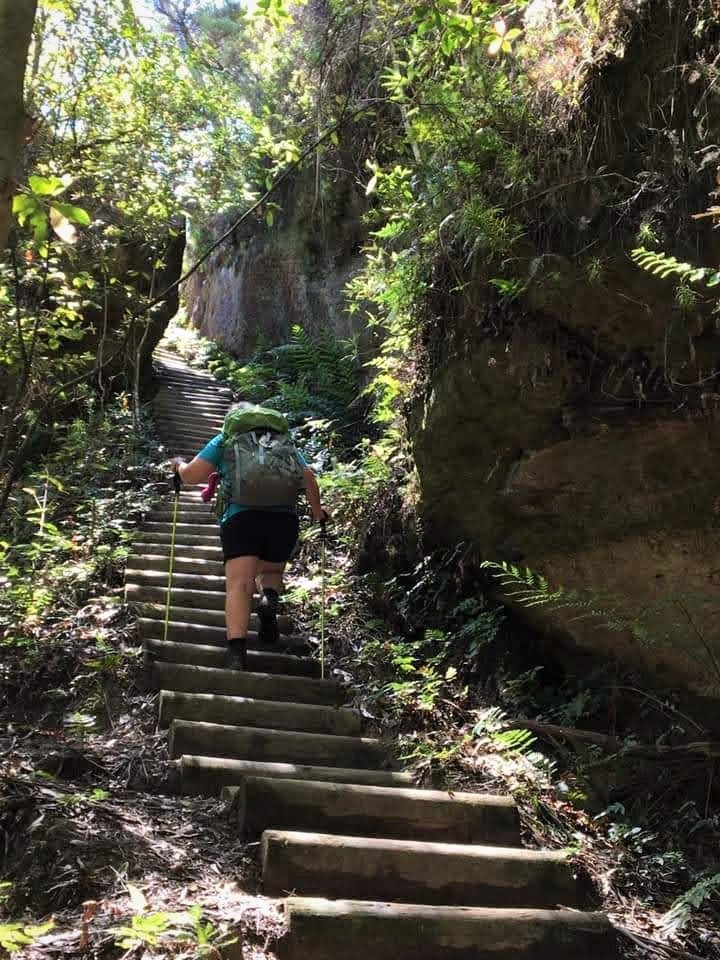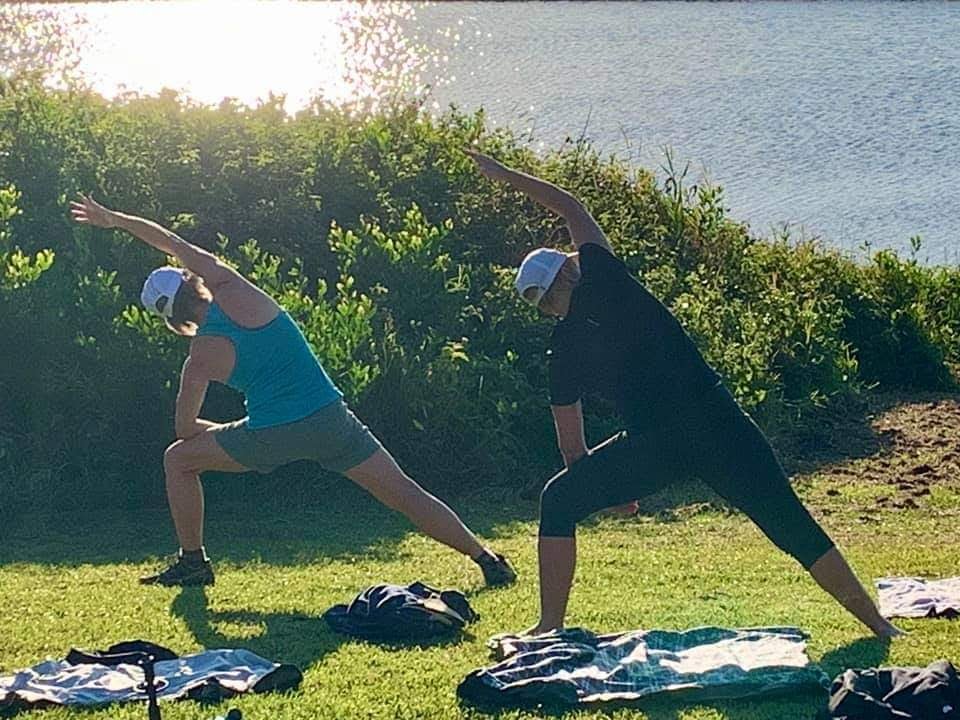What to do about sore muscles after hiking and training?
By Jo Vartanian
‘What’s wrong with mum?’I hear as I struggle to get up and down from the couch a day or two after some intense stair training or hiking.
Blue Mountains stairs will do it!
Two days after a long hike, especially one with lots of ups and downs I feel an intense muscle soreness in my calves and thighs when I walk up and down the stairs in my home.
It happens to me after some trek training sessions too. The first time in a while, on the 1000 Sublime Point stairs in Wollongong usually does it. Calf muscles scream at me for a day or two
So, what’s going on? And is it normal and is it healthy?
It’s called Delayed Onset Muscle Soreness or DOMS for short and yes, it’s a thing, and it’s normal and it is usually a positive signal that you are building fitness.
The FACTS!
What’s Normal?
· It begins around 8hrs after training and peaks at 24-48 hours then starts to ease.
· You should still be able to carry out normal daily activities (with a little grimacing!)
What’s NOT Normal?
· You feel pain during training or immediately after training
· The pain lasts more than a few days
· You can’t do normal daily activities
What causes DOMS?
· Being new to exercise
· Adding a new activity to your training
· Increasing the intensity of your training
· Repeating the same exercise over and over
WOW… do you tick any of these boxes as you emerge from lockdown and back into training. I can tick 3 of those.
Is DOMS HEALTHY?
I’m not a fan of the “no pain, no gain” motto for training because pain is sometimes a clear signal from the body that there is an injury and continuing to exercise will make it worse, not better. BUT in the case of DOMS, the news is better. According to current research, the evidence suggests that DOMS is the result of tiny tears in the muscle fibres that will heal quickly and with benefits. The good news is that when they heal the muscle become bigger and stronger. Awesome, yes?
HOW to you ease DOMS with these 6 EASY ‘home remedies’?
While we know the pain of DOMS signals good things happening in our body, it’s also beneficial to assist the body in the healing process and ease the pain. Here’s what you can do.
· MOVE – while it’s tempting to just put your feet up and watch Netflix on the couch, it’s probably one of the worst things you can do. On the day after your exercise you should aim to move – do light exercise to increase blood flow to the troublesome muscles. I like to go on an easy pace walk, ride my bike or swim. Light stretching is also helpful but sometimes just too painful.
· MASSAGE/FOAM ROLLER – increasing the blood flow to the muscles aids in the removal of waste products and it helps to increase the flow of the repair chemicals to the sore muscles. It also feels amazing.
· USE COLD & HEAT WISELY – immediately following exercise, the application of cold is preferable to reduce inflammation – think ice baths, icepacks and I love an ocean plunge after a run. However, once DOMS has arrived it’s time for heat to increase blood flow. Heat packs or a soak in a hot bath with Magnesium salts and a glass of wine is a winner.
· EAT PROTEIN – we all know that protein aids in muscle growth and is essential in supporting muscle repair. So help your body build those bigger stronger muscles with a bit of extra egg, cheese, lean meats, nuts and pulses in your diet.
· HYDRATE – nothing helps the body more, to function efficiently, than ensuring you are well hydrated. While your body is in repair mode keep the fluids up – water is fine. Remember caffeine and alcohol dehydrate.
· SLEEP – I’ve put this last because I want you to remember it. Sleep is the body’s time to recover and repair. In the days you are experiencing DOMS aim for 7-8hrs of quality sleep each night.
A note on anti-inflammatory medications like ibuprofen (in Nurofen) and diclofenac sodium (in Voltaren). These can be useful in reducing inflammation and pain, but I recommend trying all of the above first and avoiding the potential side effects of these strong medications. Paracetamol can also be used to reduce pain if necessary. Remember, if pain persists, see your doctor.
A Final Word.
It’s easy to focus on the exercise part of the equation below but it is essential that you give the same focus to the other half of the equation. Without it, everything you are aiming to achieve through exercise and training could amount to zero or worse send you backwards.
Exercise + Recovery = Growth
A cold water plunge after an intense training session will ease the pain of DOMS.




